1. The definition of Nantong’s Zuozhen wood
Zuozhen (柞榛), also known as "Zuo Wood" or "Zuo conifer"[1], is the local name for the Nantong variety of the evergreen small tree commonly known as the Cudrania tricuspidata. It is a dioecious species, with rhomboid-ovate leaves, and its inflorescence is nearly spherical. The bark is grayish-brown with slight ridges, and young branches are thorny while old branches are not, featuring grooves. The heartwood is yellow and the wood is hard and fine-grained, with a long growth cycle. Overall, it conforms to the characteristics of the Cudrania tricuspidata. Most sources consider Zaozhen to belong to the genus Cudrania tricuspidata of the mulberry family (Moraceae), although some sources classify Zaozhen as belonging to the Flacourtiaceae family [1]. Cudrania tricuspidate is a common tree in China, found in the western, central, and southeastern regions. However, due to regional environmental differences, only the Cudrania tricuspidata produced in the Yangtze River alluvial plain is referred to as "Zuozhen Wood". Zaozhen Wood, as a locally unique type of Scholar Tree from the Yangtze River alluvial plain, is mainly distributed in Nantong, Jiangsu, and its surrounding areas, representing a native species of Cudrania tricuspidate in Nantong.
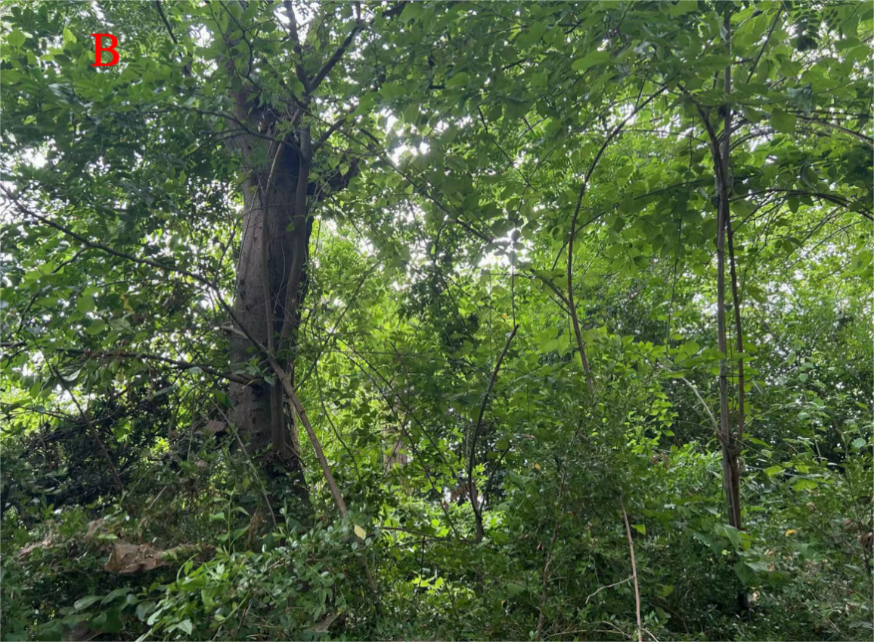
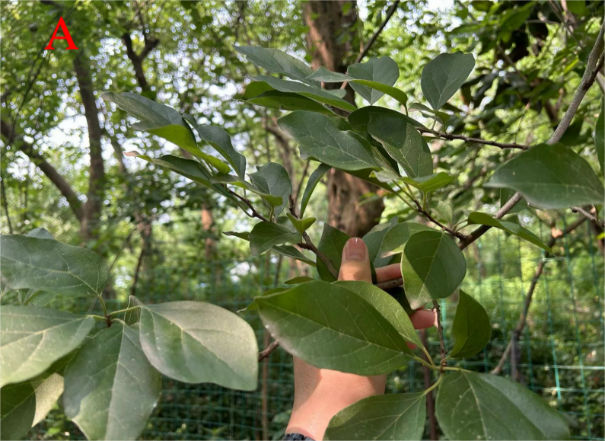
Figure 1. Field photographs of a Field photographs of Xylosma congesta: A. Branches and leaves of the Cudrania tricuspidata, B. Trunk of the Cudrania tricuspidata
Location: Nantong Liangcheng Zuozhen Forestry Development Co., Ltd.; Date of photography: August 12, 2024
The Cudrania tricuspidatahas a long history of cultivation and utilization in China. Wu Qijun from the Qing Dynasty recorded the following in his work "A Long Treatise on the Illustrated Study of Plants":[6,7] "The Cudrania tricuspidate was first documented in the 'Jiayou Bencao' (The Pharmacopoeia of the Jiayou Era). Its leaves can be used to feed silkworms, and the wood can be dyed yellow. The 'Jiuhuang Bencao' (Pharmacopoeia of Ming Dynasty) states that the leaves and fruits are edible, and the wild small tree is known as 'zhenu'. Therefore, it is recorded in the 'Bencao Shiyi' (Pharmacopoeia)." The wood of the Cudrania tricuspidate is hard and wear-resistant, resistant to corrosion, and also has excellent elasticity and bending properties, which is why it was often used in ancient times to make furniture, bows, and the fragile parts of weapons. At the same time, the Zuozhen also has medicinal value; in traditional Chinese medicine, the roots, stems, and leaves of the Zuozhen are widely used as medicine. The root is known as "Chuan Po Shi", and the wood is known as "Zhe Mu", with effects such as nourishing the kidneys, strengthening essence, cooling blood, relaxing muscles, dispelling wind, promoting blood circulation, reducing inflammation, and relieving pain[3,6]. In modern medicine, various components of the Cudrania tricuspidata, including flavonoids10, polysaccharides[11], and phenolic substances[12], have excellent medicinal value. At the same time, the leaves can be used to feed silkworms; the fruit is edible and can be used for brewing wine. In ancient China, the Cudrania tricuspidate was often mentioned alongside the mulberry tree, indicating that its uses were no less than those of the mulberry[5].
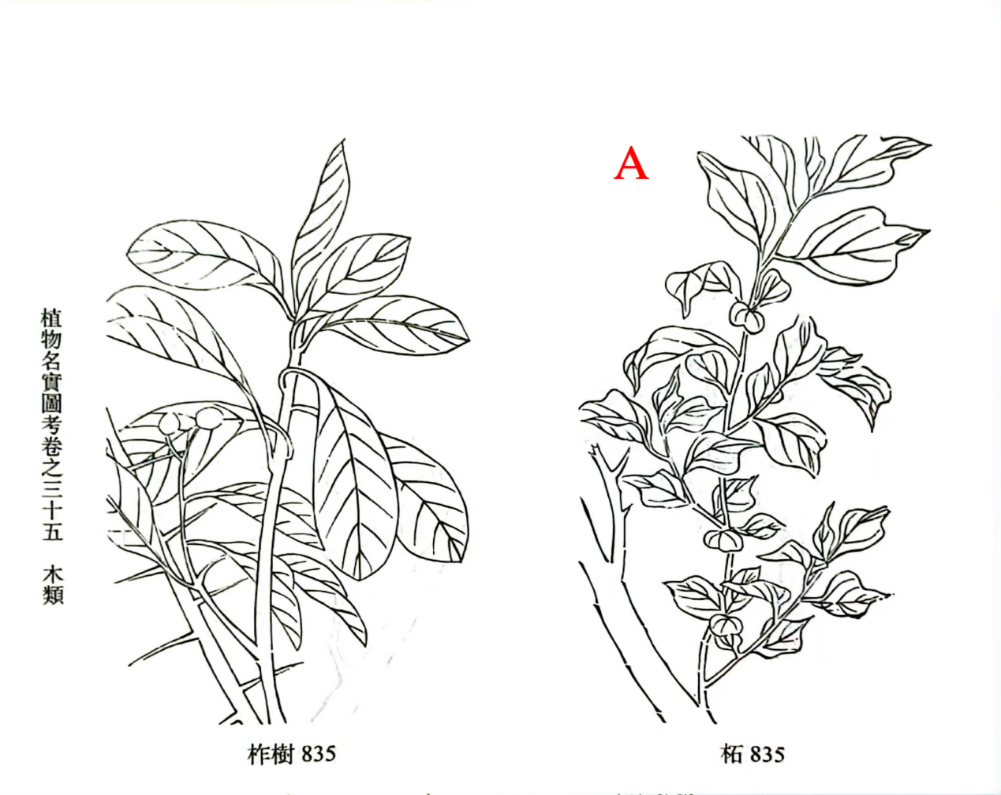
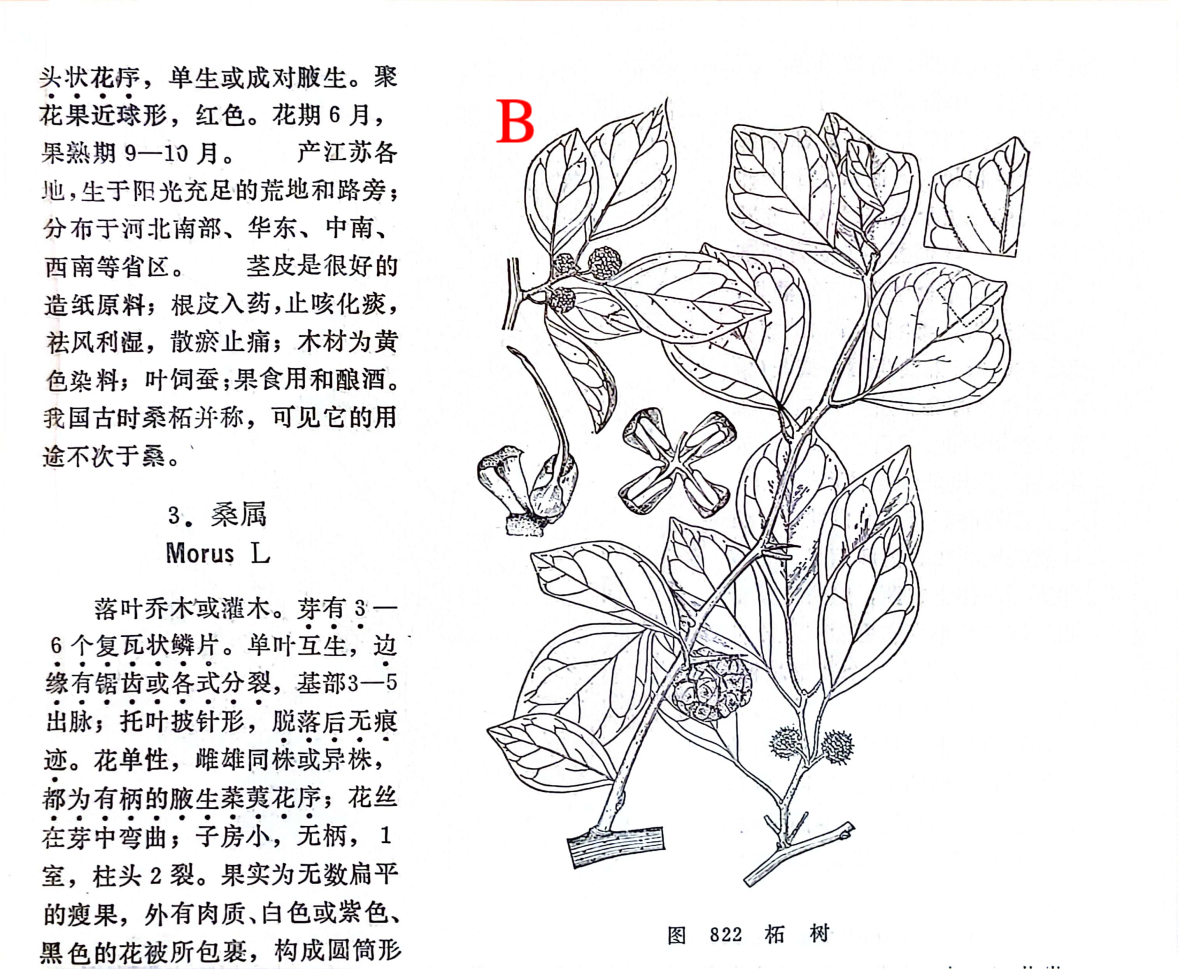
Figure 2. Illustration of the branches and leaves of Zuozhen in the literature: A. Branches and leaves of Broussonetia,Cudrania tricuspidata[Qing] Wu Qijun (author), Luan Baoqun (collation and annotation). Illustrated Book of Plant Names and Facts: Volume Thirty-five: Lower Volume: Wood Category, Cudrania tricuspidata 835[7], B. Branches and leaves of Cudrania tricuspidata from Jiangsu Province Institute of Botany. Jiangsu Flora: Lower Volume: Moraceae Cudrania tricuspidata, Figure 822 Cudrania tricuspidata[5]
According to the "Flora of China" (1988), there are about 6 species of Cudrania tricuspidata, with 5 species native to China, namely: Maclura cochinchinensis (an erect or climbing shrub, distributed in the subtropical regions from southeastern to southwestern China), Cudrania fruticosa(a climbing woody vine, distributed in Yunnan), Cudrania amboinensis (a climbing shrub, distributed in southern to central-southern Yunnan, southeastern Tibet), Cudrania pubescens (a woody climbing shrub, distributed in southern regions), and Cudrania tricuspidata (a deciduous shrub or small tree, widely distributed), mainly shrubs and vines, with only one species being a small tree[14]. The "Botany of Trees" (1997) edited by Ren Xianwei, however, suggests that there are 10 species of Cudrania tricuspidata plants, with 8 species native to China, but only records Cudrania tricuspidata[13].
At the same time,according to the Jiangsu Flora, there are only eight species of Broussonetia in China, distributed from the southwest to the southeast, with only one species in Jiangsu[5]. It is likely referring to the Zuozhen, but the book does not include the term "Zuozhen." From the comparison of Figures 1, 2, and 3, it can be seen that the rhomboidal ovate leaves of Zuozhen are more ovate, which aligns with the description in the Jiangsu Flora, and they differ significantly from the rhomboidal ovate leaves of other Cudrania tricuspidata species, further demonstrating the regional characteristics of Quercus serrata. The main use of Zuozhen wood in Nantong is for making characteristic Zuozhen wood furniture.
2. The environmental value of Nantong Zuozhen wood furniture industry
The zuozhen wood’s tree has a long growth period and clear natural wood grain. Its texture is hard, fine, oily, and dense, with a deep pattern of swirling grain that resembles a ghostly face, naturally lively and elegant, like a natural landscape painting. In traditional Chinese furniture materials, zuozhen wood is classified as hardwood, and the Nantong furniture-making technique, famous since the Ming and Qing dynasties, is renowned for its zuozhen wood furniture craftsmanship. The process is meticulous, usually without paint or color, to showcase its smooth and elegant natural grain. After polishing and waxing, the excellent texture of the zuozhen wood is revealed, forming its unique aesthetic taste and distinctive style. Therefore, the furniture industry holds a very important position in the Nantong zuozhen wood industry.
As a representative product of Nantong furniture, zuozhen wood furniture has strong regional characteristics. Over the past century, due to Nantong's economic exchange attribute connecting the north and south and its relatively closed regional characteristics, despite absorbing excellent furniture-making techniques from all over China, traditional Nantong zuozhen wood furniture is rarely found outside of Nantong and its surrounding areas. Therefore, the material is little known outside of these regions, and at the same time, the zuozhen wood furniture is unique in craftsmanship, becoming a distinctive feature of Suzhou-style furniture[2]. To ensure the quality of the furniture, Nantong craftsmen require that the entire piece be made of zuozhen wood, rather than substituting with other woods. The craftsmen are adept at selecting materials, valuing the natural color and grain of the wood, and skillfully using mortise and tenon structures (including the Nantong intangible cultural heritage "Kuaierwen" technique), demonstrating the rational use of zuozhen wood characteristics, giving zuozhen furniture unique ornamental and practical value.
In the manufacture of traditional red wood furniture, the use of lacquer is an unavoidable part. Although lacquer is a product of natural lacquer trees, it still contains toxic components such as aldehydes and benzene, which can pose health risks to humans. Long-term exposure and contact may lead to allergies, inflammation, and other problems. In contrast, because the core of the zuozhen wood is yellow, newly made zuozhen wood furniture is a bright yellow color throughout, and after a period of use and maintenance, it can develop a reddish-brown patina, glossy and bright, rustic and natural. This makes zuozhen wood furniture that does not require lacquer for long-term preservation, more harmless and environmentally friendly; at the same time, the clever mortise and tenon structure also means that zuozhen wood furniture does not need to use glue and nails, relying only on the artistic combination of mortise and tenon, making the furniture very sturdy and easy to disassemble for maintenance, which is conducive to saving wood[1]. The scientific manufacturing art of zuozhen wood furniture not only reflects the spirit of craftsmanship that is refined and people-oriented but also embodies the concept of rational resource utilization, harmonious coexistence between humans and nature, and the unity of man and nature.
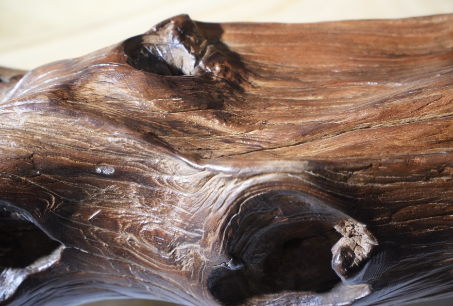
Figure 3. The debarked zuozhen wood (hazel wood) collected by the Zuozhen Wood - Hazel Furniture Museum
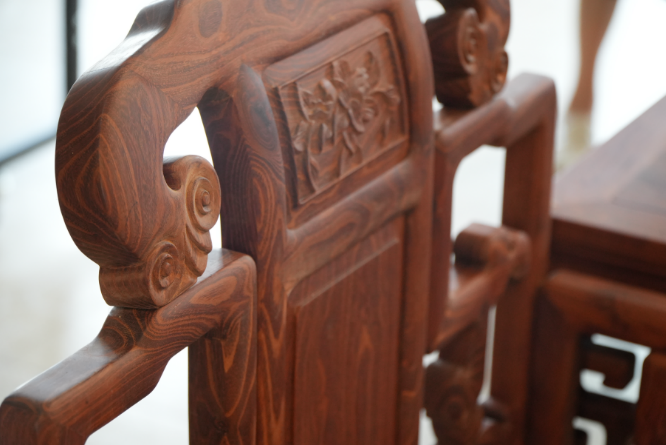
Figure 4. A zuozhen wood hazel chair
Figure 3 shows the debarked zuozhen wood hazel wood collected by the zuozhen wood Hazel Furniture Museum, which has developed a reddish-brown patina. The right Figure 4 shows a zuozhen wood hazel chair.
With the advancement of the new era and the promotion of the integration of industry, academia, and research, the study of zuozhen wood acorns and their related products has gradually deepened within the industry. We have discovered that zuozhen wood acorns also have significant value in the medical and food industries. By extracting chemical components such as pycnogenol, orobol, and quercetin, which have anti-cancer effects, zuozhen wood acorns and their related products are expected to have even broader applications in the future in the fields of healthcare, food, and other aspects of the health industry.
3. Protection and prospects of Nantong Zuozhen Wood Hazelnut
3.1. Current protection status of Nantong Zuozhen wood Hazelnut
As a representative tree species of Nantong, the protection of zuozhen wood hazelnut has faced many difficulties. In the past, as a local tree species of Nantong, zuozhen wood hazelnut could be seen everywhere in the countryside and along the sides of urban roads. However, due to the rapid urbanization, the quantity of Nantong zuozhen wood hazelnut has been continuously decreasing, and its natural ecological base has been severely threatened[4]. In the new century, with the advancement of Nantong's garden city construction, biodiversity conservation has been strongly advocated. Related protection, cultivation, and breeding work of zuozhen wood hazelnut has also been strengthened. But at present, the main protection work of Nantong zuozhen wood hazelnut is carried out by civil organizations (such as the Nantong zuozhen wood Hazelnut Association), lacking government intervention and involvement, and not included in a unified environmental monitoring system[9]. The main problem lies in the fact that the civil cultivation sites have not been registered, and there are policy deficiencies such as unlicensed numbers and scales, as well as insufficient publicity by local government media and civil groups, hindering the further development of Nantong zuozhen wood hazelnut protection.
At the same time, the related and supporting industries of Nantong zuozhen wood hazelnut are also very imperfect. The environmental protection industry chain related to zuozhen wood hazelnut is still limited to the scale of traditional handicraft workshops, with small scale and low efficiency, and more importantly, the market scale they mainly face is relatively small. The fundamental problem lies in the fact that the local brand of Nantong zuozhen wood hazelnut has not been established, and its social recognition is low, including weak overall protection awareness by the government and civil society. However, as a local representative plant with multiple functions, Nantong zuozhen wood hazelnut has important significance under the modern ecological compensation system and ecological environmental protection.
3.2. Future development prospects of Nantong Zuozhen wood Hazelnut
The development of Nantong zuozhen wood hazelnut and its supporting industries is not achieved overnight and requires a process of social awareness awakening.
Firstly, the protection of Nantong Zuozhen wood hazelnut requires the guidance of social awareness, requiring all of society and all people of Nantong to establish the awareness of protecting Nantong's natural localities, and to strengthen and accelerate the protection of local representative trees. Governments, enterprises, institutions, and social organizations need to increase support for the pillar industries of Nantong Zuozhen wood hazelnut. Especially for enterprises that integrate traditional skills with the modern market, it is necessary to increase support in terms of policy, funding, and related market environments. As a timber product, involving many policy aspects such as customs inspection and quarantine, there are many challenges and policy obstacles to introducing Nantong's excellent products overseas and across the country. In the future, only with more standardized industry-related guidelines and more efficient government coordination mechanisms can Nantong Zuozhen wood hazelnut truly play its role in ecological protection and environmental products. It is roughly estimated that around food, medical, furniture, environmental products, and board fields, the market size of Nantong zuozhen wood hazelnut will expand to one billion or more, driving effective employment in local rural areas. With the continuous implementation of China's dual-carbon strategy and the realization of carbon trading and carbon market-related policies, Nantong Zuozhen wood hazelnut will actively integrate into the national and unified national carbon sink trading market, play a stronger carbon sink role, and generate greater scale benefits.
4. Conclusion
As a local representative ecological-economic multi-purpose tree species with both ecological protection and environmental functions, Nantong Zuozhen wood hazelnut has very high economic and social value, and the related utilization of more products is gradually being explored. The protective utilization of Nantong Zuozhen wood hazelnut is not only about rescuing the local natural ecological base but also about promoting society to enhance the awareness of ecological protection and truly love and remember the hometown. Therefore, under the background of the national "dual-carbon" strategy implementation, integrating hazelnut protection into Nantong's garden city construction and biodiversity protection will have extremely high social and ecological benefits and long-term value.
References
[1]. Wang, J. (2015). A brief analysis of the cultural connotations of traditional Nantong Zuozhen wood furniture. Mass Art, (13), 264.
[2]. Qian, Y. (2011). A brief analysis of the cultural connotations of traditional Nantong Zaozhen furniture. Examination Weekly, (77).
[3]. Long, T. (2018). Research progress on domestic Broussonetia germplasm resources and their development and utilization. Forestry Science and Technology Communication, (09), 34-38. https://doi.org/10.13456/j.cnki.lykt.2018.09.010
[4]. Sun, G. (2015). Current situation and protection of Nantong local tree species Zaozhen. Modern Agricultural Science and Technology, (12), 182+191.
[5]. Jiangsu Institute of Botany. (1982). Jiangsu flora: Volume II: Moraceae Broussonetia. Jiangsu Science and Technology Press.
[6]. Wu, Q. (Qing Dynasty). Illustrated study of plants: Volume 22: Volume II: Wood category: Broussonetia. Zhonghua Book Company.
[7]. Wu, Q. (Qing Dynasty), & Luan, B. (collation and annotation). (n.d.). Illustrated study of plants with collation: Volume 35: Volume II: Wood category: Broussonetia. Zhonghua Book Company.
[8]. Editorial Committee of Flora of China, Chinese Academy of Sciences. (1998). Flora of China volume 23 (1). Beijing: Science Press.
[9]. Liu, Y., Li, X., & Li, Y. (2024). Current situation analysis and policy suggestions for environmental measurement work in China. China Measurement, (06), 83-86. https://doi.org/10.16569/j.cnki.cn11-3720/t.2024.06.041
[10]. Wu, W. (2010). Study on flavonoid chemical components and antitumor activity of Cudrania tricuspidata (Doctoral dissertation). Liaoning University of Traditional Chinese Medicine.
[11]. Dong, F. (2021). Research on extraction, separation, purification of Cudrania tricuspidata polysaccharides and their antioxidant properties (Doctoral dissertation). Shanghai Institute of Technology. https://doi.org/10.27801/d.cnki.gshyy.2021.000610
[12]. Zhao, J., Chen, Q., Cao, J., et al. (2018). Preparation and antioxidant activity of Cudrania tricuspidata polyphenols and resveratrol. China Modern Traditional Chinese Medicine, 20(10), 1288-1291. https://doi.org/10.13313/j.issn.1673-4890.20180830005
[13]. Ren, X. (1997). Dendrology (Northern Edition). Beijing: China Forestry Publishing House.
[14]. Editorial Committee of Flora of China, Chinese Academy of Sciences. (1998). Flora of China, Volume 23 (1). Beijing: Science Press.
Cite this article
Zhu,H.;Xv,Y.;Jiang,Q. (2025). Industrial research on local precious vegetation under the background of sustainable development concept—Taking Nantong Zuozhen wood as an example . Advances in Engineering Innovation,16(1),8-12.
Data availability
The datasets used and/or analyzed during the current study will be available from the authors upon reasonable request.
Disclaimer/Publisher's Note
The statements, opinions and data contained in all publications are solely those of the individual author(s) and contributor(s) and not of EWA Publishing and/or the editor(s). EWA Publishing and/or the editor(s) disclaim responsibility for any injury to people or property resulting from any ideas, methods, instructions or products referred to in the content.
About volume
Journal:Advances in Engineering Innovation
© 2024 by the author(s). Licensee EWA Publishing, Oxford, UK. This article is an open access article distributed under the terms and
conditions of the Creative Commons Attribution (CC BY) license. Authors who
publish this series agree to the following terms:
1. Authors retain copyright and grant the series right of first publication with the work simultaneously licensed under a Creative Commons
Attribution License that allows others to share the work with an acknowledgment of the work's authorship and initial publication in this
series.
2. Authors are able to enter into separate, additional contractual arrangements for the non-exclusive distribution of the series's published
version of the work (e.g., post it to an institutional repository or publish it in a book), with an acknowledgment of its initial
publication in this series.
3. Authors are permitted and encouraged to post their work online (e.g., in institutional repositories or on their website) prior to and
during the submission process, as it can lead to productive exchanges, as well as earlier and greater citation of published work (See
Open access policy for details).
References
[1]. Wang, J. (2015). A brief analysis of the cultural connotations of traditional Nantong Zuozhen wood furniture. Mass Art, (13), 264.
[2]. Qian, Y. (2011). A brief analysis of the cultural connotations of traditional Nantong Zaozhen furniture. Examination Weekly, (77).
[3]. Long, T. (2018). Research progress on domestic Broussonetia germplasm resources and their development and utilization. Forestry Science and Technology Communication, (09), 34-38. https://doi.org/10.13456/j.cnki.lykt.2018.09.010
[4]. Sun, G. (2015). Current situation and protection of Nantong local tree species Zaozhen. Modern Agricultural Science and Technology, (12), 182+191.
[5]. Jiangsu Institute of Botany. (1982). Jiangsu flora: Volume II: Moraceae Broussonetia. Jiangsu Science and Technology Press.
[6]. Wu, Q. (Qing Dynasty). Illustrated study of plants: Volume 22: Volume II: Wood category: Broussonetia. Zhonghua Book Company.
[7]. Wu, Q. (Qing Dynasty), & Luan, B. (collation and annotation). (n.d.). Illustrated study of plants with collation: Volume 35: Volume II: Wood category: Broussonetia. Zhonghua Book Company.
[8]. Editorial Committee of Flora of China, Chinese Academy of Sciences. (1998). Flora of China volume 23 (1). Beijing: Science Press.
[9]. Liu, Y., Li, X., & Li, Y. (2024). Current situation analysis and policy suggestions for environmental measurement work in China. China Measurement, (06), 83-86. https://doi.org/10.16569/j.cnki.cn11-3720/t.2024.06.041
[10]. Wu, W. (2010). Study on flavonoid chemical components and antitumor activity of Cudrania tricuspidata (Doctoral dissertation). Liaoning University of Traditional Chinese Medicine.
[11]. Dong, F. (2021). Research on extraction, separation, purification of Cudrania tricuspidata polysaccharides and their antioxidant properties (Doctoral dissertation). Shanghai Institute of Technology. https://doi.org/10.27801/d.cnki.gshyy.2021.000610
[12]. Zhao, J., Chen, Q., Cao, J., et al. (2018). Preparation and antioxidant activity of Cudrania tricuspidata polyphenols and resveratrol. China Modern Traditional Chinese Medicine, 20(10), 1288-1291. https://doi.org/10.13313/j.issn.1673-4890.20180830005
[13]. Ren, X. (1997). Dendrology (Northern Edition). Beijing: China Forestry Publishing House.
[14]. Editorial Committee of Flora of China, Chinese Academy of Sciences. (1998). Flora of China, Volume 23 (1). Beijing: Science Press.









